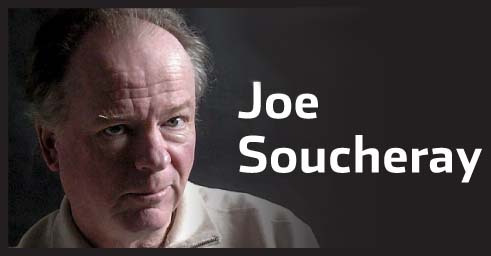Bruce Helmer and Peg Webb
Even before the pandemic took hold in the U.S. in March 2020, the world of work had been changing dramatically.
Structural shifts such as work-from-home (WFH), hybrid work, and the rise of gig work were already profoundly affecting relationships between employers and employees. Americans are changing jobs in increasing numbers, many doing so because they demand a new social contract with their employers.
Changing demographics only part of the story
Baby boomers, who have long had an outsized impact on the U.S. labor market, have been retiring in record numbers, although the trend may be shifting somewhat post-pandemic. Boomers had fewer children than their parents, so there are fewer Gen Xers and millennials to replace them.
Worker shortages, longer life expectancies, the need to make ends meet, or recently enacted financial incentives to work longer are encouraging some boomers to put off retirement and work later into their 60s and 70s.
Paychecks play a key role, too. Recent data from the U.S. Bureau of Labor Statistics report that inflation-adjusted earnings for the youngest boomers (those born between 1957 and 1964) have flatlined over the past 20 years — after this cohort had already turned 45. If the past is prologue, we should take careful note that salaries for this group increased the quickest between the ages of 18 and 24, when hourly wages went up an average of 6.5% per year. After that, the earnings growth rate slowed between the ages of 25 to 34 (+3.3% per year) and from ages 35 to 44 (+1.8% per year).
There is reason to believe that the high salaries of today’s younger workers could follow a similar pattern, causing a large percentage to seek multiple job opportunities before reaching mid-career to optimize their earnings.
Job hopping is a growing trend
Gen Zers and younger millennials are job-hopping more frequently to increase their salary and skills earlier in their careers. Although it’s always been a red flag for employers, job-hopping is now the top concern for more than three out of four hiring managers, according to HR consulting firm Robert Half.
Optimism over employment prospects led 22% of workers age 20 and older to spend a year or less in their jobs in 2022, according to the Employee Benefit Research Institute, a nonpartisan D.C.-based think tank, and about 33% spent two years or less at their jobs. Perhaps more notable is the fact that 74% of 18-to 26-year-olds and 62% of 27- to 42-year-olds were searching for a new job or planned to search in the next six months, according to the Half study. A combined whopping 49% of American workers of all ages planned to look for a new job as of Q3/Q4 2023, extending a trend that started during the COVID-19 pandemic.
So, what’s driving this relentless desire for greener pastures among employees? Is it something more fundamental than higher pay and better benefits?
Evolving relationships
Some employment experts say one reason for the spike in job-hopping is an erosion of the social contract between companies and employees. The thinking is that repeated, recession-related layoffs have in some cases led to “right-sizing” in anticipation of an economic downturn. But this interpretation masks an important point: Today’s employers are less concerned about having access to talent than about motivating and keeping workers happy. Well-being and professional development are top-of-mind for both employees and hiring managers.
According to Robert Half, the three top motivations for U.S. workers to find new employment opportunities today include higher salaries (55%), better benefits and perks (38%), and remote work options (28%). But we also found an interesting trend that confirms how workers’ needs have evolved: According to global human capital firm Mercer, workers increasingly say they want to work “with” a company not “for” a company. Aligning work with personal values is a powerful motivator for employees, and employers who adapt well to employees’ changing needs are better positioned to win the war on talent.
So, as Mercer’s research bears out, for much of the 20th century there was a “Loyalty” contract between employees and employers, whereby employers met basic needs such as steady pay, benefits, and job security in exchange for employees’ commitment that often lasted their entire careers. Then, pre-pandemic, the social contract evolved to be more focused on an “Engagement” contract, where employees’ psychological needs for achievement, camaraderie, and equity rewards were exchanged for employee contributions and effort. The new chapter of work is being organized around the “Lifestyle” contract, whereby employees’ needs for healthier physical, mental, emotional, and financial well-being are being met by employers who are seeking sustainable business performance.
We’re already seeing significant shifts in employees’ financial and well-being concerns. Three in four workers say that last year’s high inflation and market volatility have increased their stress levels, according to Mercer’s Inside Employees’ Minds survey (2022). Covering monthly expenses was the No. 1 concern of workers in 2022, up from No. 9 in 2021, and the ability to retire moved from No. 5 to No. 2. For the first time, personal debt moved into the top 10. It should surprise no one, then, how a rise in awareness of work-life boundaries has permeated American business culture: The No. 1 action that employees are looking for is a “reduced workload” and a rejection of “hustle culture.”
What lies ahead?
The evolution toward a Lifestyle social contract raises lots of questions with no clear answers (and we haven’t even raised the specter of AI’s anticipated impact on the world of work):
• Are workers who seek greater work-life balance as productive or as likely to be considered for promotion and career advancement?
• Will they meet their goals for retiring on their terms?
• Are employers realistic in their demands for workers to return to the office?
• Should employers adopt the new lifestyle contract to ensure that workers reward them with loyalty, commitment, and retention?
What we can say with confidence is that creating a resilient, comprehensive financial plan helps give you better control over, and confidence in, your career decisions. By managing day-to-day finances, preparing for the unexpected, getting on track to meet long-term goals, and thinking about what will give you the freedom to make choices in life that matter the most to you, you set yourself up to survive and thrive — whatever the world of work looks like in the future.
Your Money: Squeezed in the ‘club sandwich’ generation?
Your Money: Looking ahead to the fourth quarter
The opinions voiced in this material are for general information only and are not intended to provide specific advice or recommendations for any individual.
Bruce Helmer and Peg Webb are financial advisers at Wealth Enhancement Group and co-hosts of “Your Money” on WCCO 830 AM on Sunday mornings. Email Bruce and Peg at yourmoney@wealthenhancement.com. Securities offered through LPL Financial, member FINRA/SIPC. Advisory services offered through Wealth Enhancement Advisory Services, LLC, a registered investment advisor. Wealth Enhancement Group and Wealth Enhancement Advisory Services are separate entities from LPL Financial.




